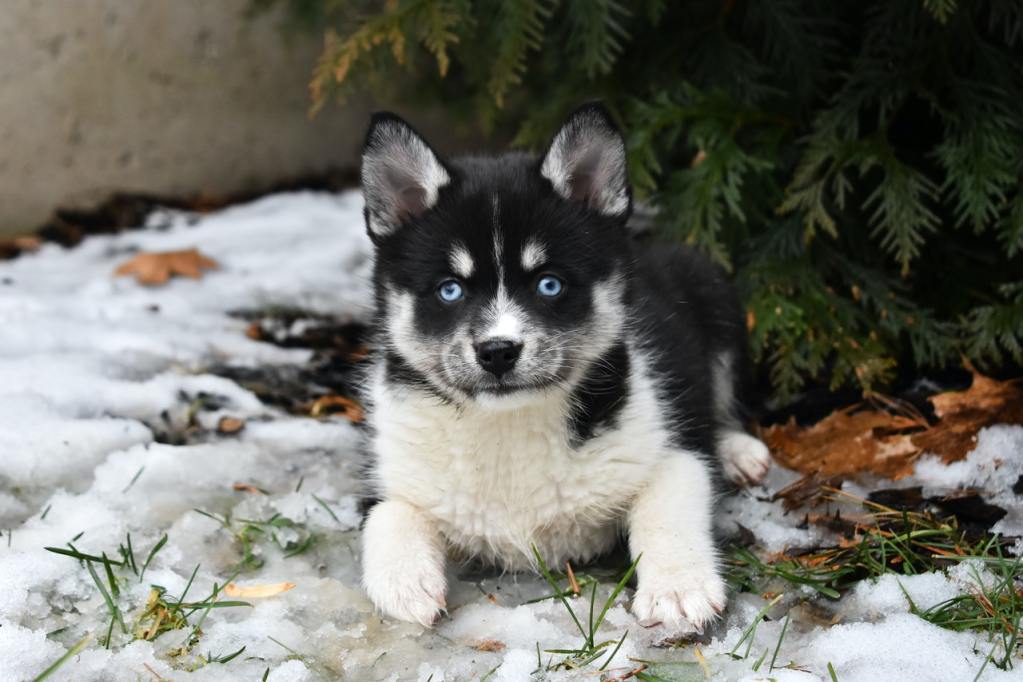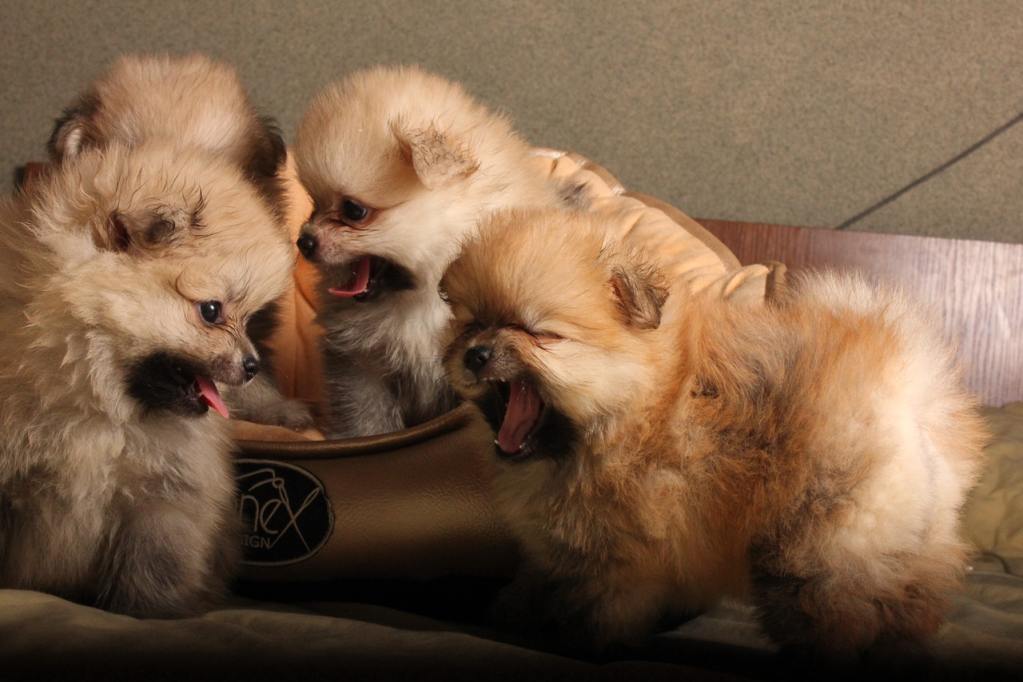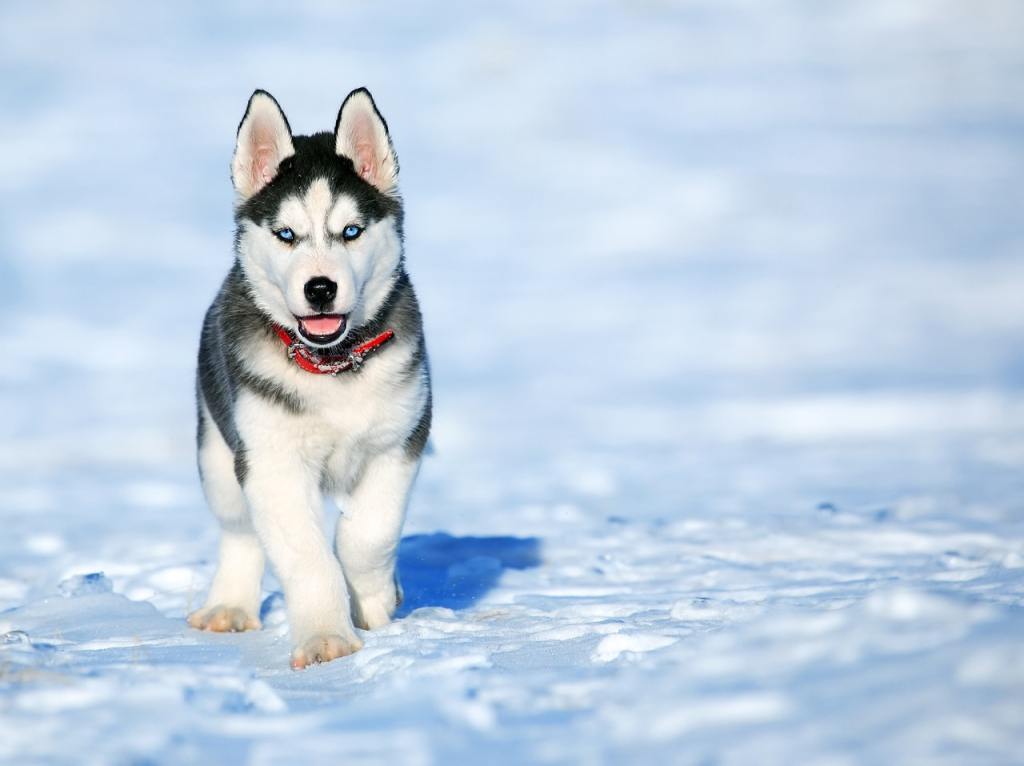Have you heard designer dog enthusiasts talk about Pomskies? If so, you’re probably wondering, “What is a Pomsky dog?” We’re here to keep you in the loop. A Pomsky is a relatively new (and fairly rare) crossbreed between two of our favorites: the Siberian husky and the Pomeranian. While they’re not recognized by the American Kennel Club or United Kennel Club, we’re keeping our fingers crossed for these adorable pups.
A brief history of Pomskies
A blog post in 2011 featuring images of adorable puppies purported to be Siberian husky and Pomeranian mixes went viral and caused the internet to squeal in collective delight. Although the puppies in question were actually Finnish Lapphund puppies, not Pomskies, breeders made it happen.
The size difference between the breeds makes natural breeding impossible. Thanks to modern science, breeders used artificial insemination, and the Pomsky was born. Pomskies are high-energy, fiercely intelligent, and loving dogs, but they are predisposed to issues that plague their parents. Issues range from minor (year-round shedding) to severe (collapsed tracheas and heart disease).

What do Pomskies look like?
Given their mixed parentage, Pomskies vary widely in appearance, though not size. Depending on whether their Pomeranian or husky genetics are dominant, they can resemble miniature huskies or take after the Pom side of the family. Pomskies may be long or short, and their height varies from 10 to 15 inches on average. They typically weigh around 20–30 pounds, making them ideal for small homes, townhouses, and apartments.
Some Pomskies have the traditional husky gray-and-white, black-and-white, or red-and-white coloring, but they are also found in blue and white, shades of brown and tan, and even pure white or black like Pomeranians. Pomskies most often have the markings and coloring of a husky with a Pomeranian’s dense, fluffy coat. Pomsky puppies from the same litter may vary dramatically, with some resembling tiny huskies and others looking like blue-eyed Poms.
Their eye color varies a lot, too. You’ll commonly find the vibrant blue husky eye color, but they can sometimes have brown eyes. Another unusual trait found in many Pomskies is heterochromia — called bi-eyes or parti-eyes in dogs — meaning one eye is blue and the other is brown, or one eye contains both blue and brown pigment. Fun fact: While it’s considered a flaw in many breeds, heterochromia is a highly desirable trait in Pomskies.

What to expect from a Pomsky
Despite being a relatively rare crossbreed, Pomskies have taken social media by storm thanks to their plush coats and adorable faces. These high-energy lapdogs have an average life expectancy of 13–15 years. To stay healthy and happy, Pomskies need about an hour of exercise a day. Fortunately, they’re small dogs, so they don’t require a massive yard to stay fit.
Since Pomskies are crossbreeds, there isn’t a breed standard for their temperament. As with their appearance, Pomskies may take after the Siberian husky or the Pomeranian parent in their behavior. Luckily, Pomeranians and huskies have similar temperaments. Both breeds are intelligent, loyal, loving, and affectionate, traits that are commonly passed down to these precious hybrid pups.
If you’re looking for a talented watchdog, but you don’t have a ton of space, a Pomsky is a fantastic option. With the protective instincts of their husky genetics, Pomskies are fierce defenders of their homes — and their humans. While Pomskies are amiable pooches who generally love everyone in their household, they’re often loyal to their favorite human above all.
Things to consider before you get a Pomsky
While we love these adorable pups, they’re not for everyone. It’s important to note that huskies and Pomeranians are both prone to barking and yapping. You can train dogs to bark less, but the noise level is definitely something to bear in mind if you live in an apartment with thin walls or have roommates who can’t tolerate noisy animals.
Like Pomeranians, Pomskies are often shy around small children, so they may not be the best bet if you have young kids. Pomskies also may not be the best companions for excitable older children. Because of their high intelligence and stubborn streak, Pomskies need calm, firm leadership, so they’re best suited to people with assertive, even temperaments.

Final thoughts
Like their parents, Pomskies are clever, playful, and affectionate dogs, but they can be a handful if you’re not prepared. They need frequent exercise, daily grooming, and a firm hand during training. If you’re patient and experienced with dogs, a Pomsky may be the perfect addition to your household.



